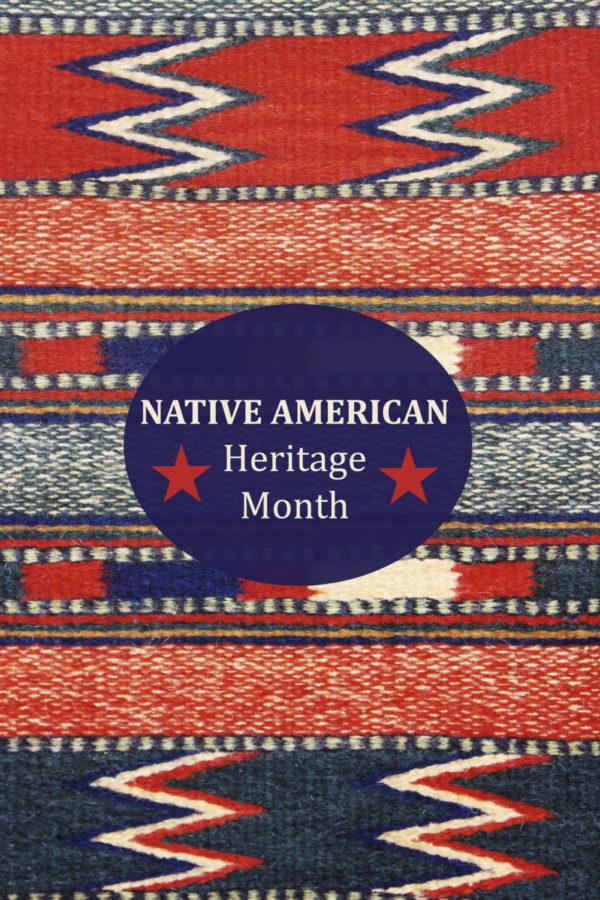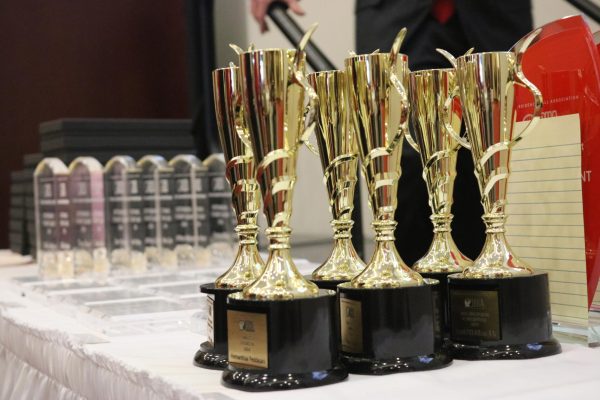Native American students strive to raise awareness on campus
Katy Klopfenstein/Iowa State Daily
Native american heritage month
November 8, 2015
November marks not only the start of Native American Heritage Month but also the beginning of a new week celebrating Native American cultures created by two ISU students.
The event, which begins Monday, is an all-encompassing celebration of Native American customs and traditions. It also provides an opportunity to bring up issues facing Native Americans and their tribes.
Sydney Allen, sophomore in earth science, and Alejandra Perez, sophomore in English, the minds behind the upcoming week, said only 75 students claim Native American descent at Iowa State.
“We decided that since there weren’t a ton of Native Americans on campus, we wanted to find a way to educate students that don’t know about [Native Americans] and don’t know about tribes,” Allen said.
Jen Coppoc, lecturer in American Indian studies, sees the month as a time of reflection of the United States, starting with the history of Columbus and the founding of the nation.
“I think it’s important to have a Native American awareness month so that we can begin to change some of the misinformation and misinformed narratives,” Coppoc said.
A common theme among native students is a feeling of cultural misrepresentation, something that has become an even bigger issue during the past decade with sports teams and colleges coming under fire for their representation of tribes and their people.
“Something I do as a test for my students is ask them to name three Native American activists, actors or writers, and they look at me very blankly,” Coppoc said. ”Then I say name three sports teams that use Native American imagery and of course they start to name the Redskins, the Seminoles and the Fighting Sioux. It’s mascots that reflect our stereotypes.”
Halloween weekend featured a push to remove culturally offensive costumes from parties and the Homecoming football game such as the common staples of a warrior or Pocahontas through signage posted at the various residence halls.
”Our culture shouldn’t be a costume,” Allen said.
Spanning hundreds of years of evolution, the history that many Native Americans cherish is in danger of becoming extinct because of pressure for assimilation and change.
“Along with the tribes that have disappeared over the years, their language has disappeared with them too,” Allen said.
The most prevalent languages still spoken in Native American tribes include Navajo, about 170,000 speakers; Cree in the upper Canadian region, about 117,000 speakers; and Cherokee in Oklahoma, about 13,000 speakers.
“My tribe recently just opened up their own foster care system,” Perez said. “There’s a big deal about Native children not being adopted into our culture. ”I’m adopted myself, and that’s why I didn’t know much about my tribe and I didn’t know what I was. My parents took me to see the pow wows and it opened up a whole new world to me of culture.”
The biggest and most prominent Native American group in Iowa is the Meskwaki, who live in an area that stretches 8,000 acres wide to the west of Tama. But many reside outside the state, including Perez’s own Omaha people and Sioux, Chippewa and the Navajo in Utah and Arizona.
Tribes function much like a self-sufficient city, as functions such as schooling, government and health care are all taken care of within the allotted settlement land. If land owned by a tribe is officially recognized by the U.S. government under the United States Department of the Interior’s Bureau of Indian Affairs, it is known as a reservation and is eligible for external funding and land grants.
“Many reservations today have shrunk compared to what was initially established and they have a whole host of issues specific to that tribe,” Coppoc said. ”Some are dealing with high rates of poverty and unemployment.”
Native American tribes, which are similar in some aspects of culture, often find very different ways of generating revenue for their people. Tribes also embrace and reject different traditional native customs.
“Casinos are a great example,” Coppoc said. “They’ve been a really great revenue generator and have helped the tribes get out of poverty. There are other tribes though that don’t feel like that’s an ethical way to sustain themselves. It’s a good example of tribes negotiating contemporary realities and traditional values.”
Some tribes offer support for students attending universities or other education opportunities. These scholarships and grants, handed out for academic, leadership or ethnicity purposes, pose a strong negative connotation in Allen’s eyes for those looking in from the outside.
“Some people just assume we get money for free, but I’m not going for free,” Allen said. “I worked and paid for school myself.”
In its current state, Iowa State offers no activities or groups specifically created by Native Americans for Native Americans.
“As soon as we get this started we are hoping to get all the Native [American] students together and restart the organizations,” Allen said.

















